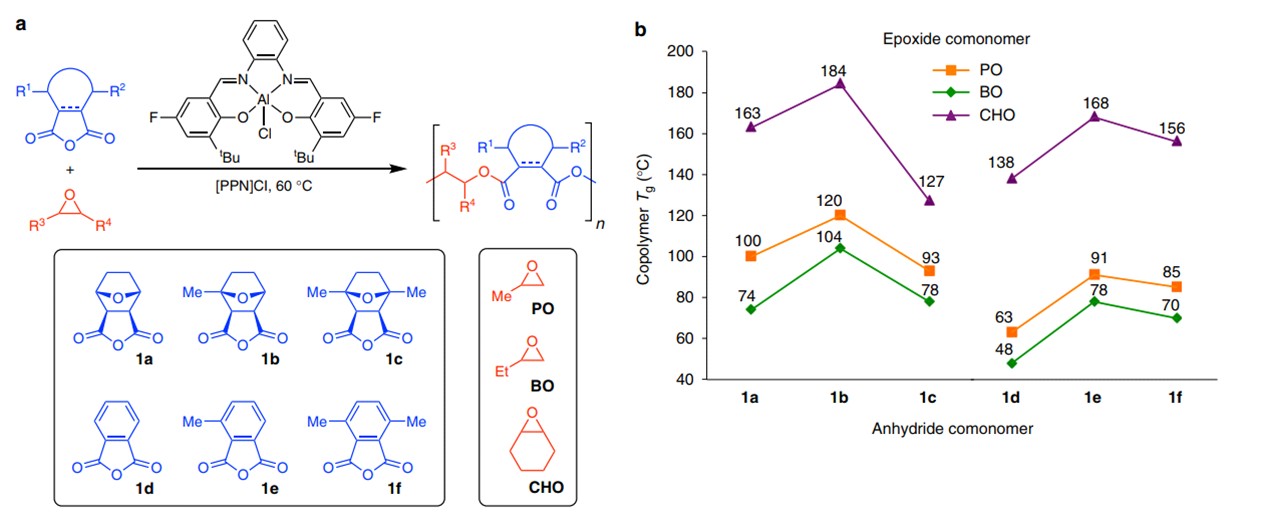Yu, X.; Jia, J.; Xu, S.; Lao, K. U.; Sanford, M. J.; Ramakrishnan, R. K.; Nazarenko, S. I.; Hoye, T. R.; Coates, G. W.; DiStasio R. A. Jr. Nature Commun. 2018, 9, 2880.
Converting biomass-based feedstocks into polymers not only reduces our reliance on fossil fuels, but also furnishes multiple opportunities to design biorenewable polymers with targeted properties and functionalities. Here we report a series of high glass transition temperature (Tg up to 184 °C) polyesters derived from sugar-based furan derivatives as well as a joint experimental and theoretical study of substituent effects on their thermal properties. Surprisingly, we find that polymers with moderate steric hindrance exhibit the highest Tg values. Through a detailed Ramachandran-type analysis of the rotational flexibility of the polymer backbone, we find that additional steric hindrance does not necessarily increase chain stiffness in these polyesters. We attribute this interesting structure-property relationship to a complex interplay between methyl-induced steric strain and the concerted rotations along the polymer backbone. We believe that our findings provide key insight into the relationship between structure and thermal properties across a range of synthetic polymers.
